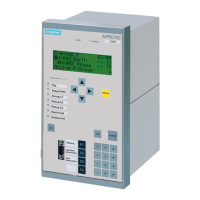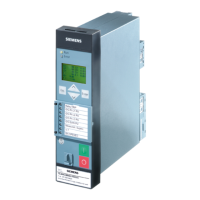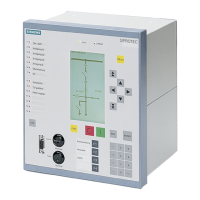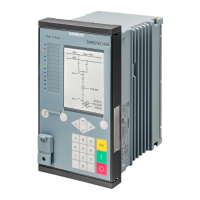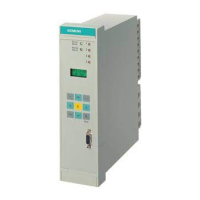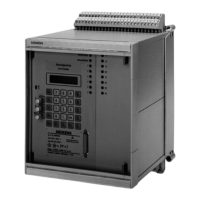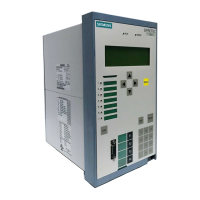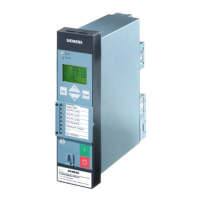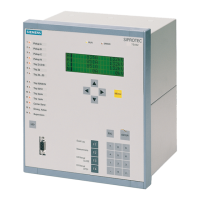2.8 Instantaneous High-Current Switch-onto-Fault Protection (SOTF)
93
7SD610 Manual
C53000-G1176-C145-4
2.8 Instantaneous High-Current Switch-onto-Fault Protection (SOTF)
2.8.1 Function Description
General The instantaneous high-current switch-onto-fault protection function is provided to dis-
connect immediately, and without delay, feeders that are switched onto a high-current
fault. It serves, e.g. as a rapid protection for connecting a feeder with closed grounding
disconnector. In order to function properly, the devices at all ends of the protected
object must know the circuit breaker positions (breaker auxiliary contacts).
A second stage works fast and without delay, regardless of the circuit breaker position.
I>>> stage The pickup of the I>>> stage measures each phase current and compares it to the
setting value I>>>. The currents are numerically filtered to eliminate the DC compo-
nent. DC current components in the fault current and in the CT secondary circuit fol-
lowing the switching off of large currents practically have no influence on this high-
current pickup operation. If the setting value is exceeded by more than twice its value,
the stage will automatically use the peak value of the unfiltered measured quantity so
that extremely short command times are possible.
This stage is only enabled when the local circuit breaker is closed while the other line
end is open. The devices exchange the status of their respective circuit breakers con-
tinuously via the communication link. If the protected object is already live (from a dif-
ferent end) the stage is not effective. An indispensable precondition for the functioning
of the I-STUB stage is that the auxiliary contacts of the circuit breakers are connected
at all ends of the protected object and allocated to the relevant binary inputs. If this is
not the case, this stage is not effective. The central function control communicates the
information of the circuit breaker position to the high-current instantaneous tripping
(see also Section 2.16.1).
Figure 2-36 shows the logic diagram. The I-STUB stage at the bottom of the diagram
operates separately for each phase. During the manual closing of the circuit breaker
all three phases are enabled via the internal signal „SOTF enab. L123“ which is issued
by the central functional control of the protection, provided that the manual closing can
be recognized there (see Section 2.16.1).
Tripping can also be enabled separately for each phase by the signals „SOTF enab.
Lx“. This applies also, for example, to automatic reclosure after single-pole tripping.
Then, single-pole tripping with this stage is possible, but only if the device is designed
for single-pole tripping.
I>>>> stage The I>>>> stage trips regardless of the position of the circuit breakers. Here, the cur-
rents are also numerically filtered and the peak value of the currents is measured from
the double setting value onwards. Figure 2-36 shows the logic diagram in the upper
part.
Therefore, this stage is used when current grading is possible. This is possible with a
small source impedance and at the same time a high impedance of the protected
object (an example can be found in the advice on setting notes, Section 2.8.2).
The I>>>> stage is enabled automatically by the current-step monitoring
dI
/
dt
of the
device for a duration of 50 ms. This stage operates separately for each phase.
www . ElectricalPartManuals . com
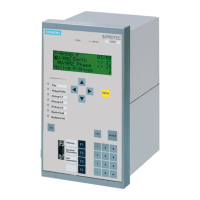
